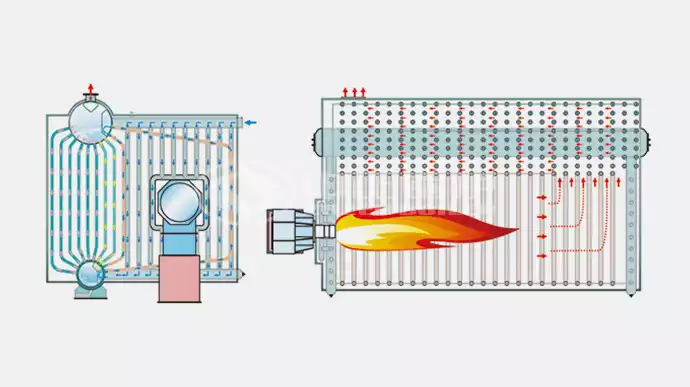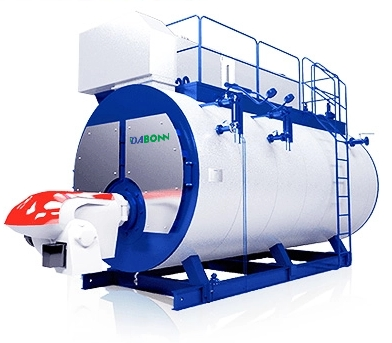
Introduction
If you’re in the market for a boiler, then you know that there are a lot of factors to consider. Sizing a boiler is very important when trying to find the right boiler for your home (or business). Boiler capacity is measured in British Thermal Units (BTU).
Does boiler size matter?
Boiler sizing is important because it determines the amount of heat that is generated. It’s important to know how much space you have and what kind of heating system would work best for your home.
For example, if you live in an area with mild winters and want to keep your home at a comfortable temperature all year round. Then a smaller boiler might be sufficient. On the other hand, if you live in an area with harsh winters and need to keep your home warm or provide hot water for multiple people at once (such as an apartment building). Then it would be best to get a larger unit that can produce more heat.
How do I size a commercial boiler?
Commercial boilers are larger than residential boilers because they have to heat more space and water. To determine the size of your commercial boiler, you need to calculate the total BTUs required by each zone of your building and then add them together. You can use this formula:
- Total BTUs = (sq ft x 2) + (sq ft x 1) + (sq ft x 0.75) + (sq ft x 0.50)
For example, if you’re trying to size a 1000-square-foot room with no windows or doors:
- Total BTUs = 1000 x 2 + 1000 x 1 + 1000 x 0.75 + 1000 x 0.50 = 4250
How do I size a steam boiler?
Choosing the right steam boiler involves understanding the steam load requirements, pressure, and temperature needs of your application. Here’s a step-by-step to help you select the appropriate steam boiler size:
Step 1: Determine the Steam Load Requirement
Calculate the total steam load required for your application. This involves adding up the steam consumption of all heat-emitting devices, such as radiators, coils, or process equipment.
Step 2: Determine the Required Pressure and Temperature
Identify the required steam pressure and temperature for your application. This information is crucial for selecting a boiler that can provide steam at the desired conditions.
Step 3: Convert Steam Load to Boiler Capacity
Convert the steam load requirement from pounds of steam to boiler capacity in terms of boiler horsepower (BHP) or BTUs. Boiler capacity is typically measured in pounds of steam produced per hour (lb/hr).
Step 4: Account for Safety Margin
Add a safety margin to the calculated boiler capacity to ensure the boiler can handle peak demand and accommodate future expansion. A common safety margin is around 20%.
For example: Let’s say you have a system that requires 10,000 pounds of steam per hour. The steam temperature is at 100 psi and 250°F (121°C). If 1 BHP produces 34.5 lb/hr of steam, then your 10,000 lb/hr steam load corresponds to approximately 290 BHP. Adding a 20% safety margin, last your required boiler size becomes approximately 350 BHP.
How to size a boiler for my house?
Sizing a boiler for your house involves determining the heat load requirements to ensure your home is comfortably heated while avoiding energy waste.
Calculate the Heat Load
- Determine Square Footage: Measure the square footprint of your house’s living space, including all floors.
- Consider Climate and Insulation: Consider your local climate and the quality of insulation in your home. Colder climates and poorly insulated homes will require more heating.
- Calculate Heat Loss: Use a heat load calculation formula (such as the Manual J method) that takes into account factors like square footage, insulation, windows, doors, and climate to estimate the heat loss your house experiences.
Choose a Boiler Size
- Select a Boiler Type: Choose between a combi boiler or a system boiler.
- Determine Efficiency: Check the efficiency rating of the boilers you’re considering. Efficiency indicates how much of the input energy is converted into useful heat.
- Calculate Boiler Capacity: Multiply the calculated heat load (in BTUs) by a safety factor. A common safety factor is 1.2 to 1.5. Providing a buffer for peak demands and ensuring the boiler isn’t constantly running at maximum capacity.
For example, If you have a 2,000-square-foot house in a cold climate. The heat load calculation estimates your heat loss to be 50,000 BTUs per hour. Using a safety factor of 1.3, then Boiler Capacity = 50,000 BTUs/hour * 1.3 = 65,000 BTUs/hour.
How to size a boiler for radiant heat?
Sizing a boiler for radiant heat involves understanding the heat load requirements of your radiant heating system.
- Determine Floor Area: Measure the square footprint of the area to be heated with radiant floors. This could be a single room or multiple rooms.
- Select Design Temperature: Decide on the desired indoor temperature. This is the temperature you want to maintain within the heated space.
Example: Let’s say you want to heat a 500-square-foot room to 70°F when the outdoor temperature is 20°F. The heat load calculation estimates the heat loss to be 20,000 BTUs per hour. If the safety factor is 1.5, then this size of boiler for radiant heat is 20,000 BTUs/hour * 1.5 = 30,000 BTUs/hour.
Conclusion
Hopefully, this article has provided you with the information needed to size your next boiler. Remember that it’s important to choose a boiler that is appropriate for your home or business. And we encourage you to consult with a professional before making any purchases.
Get your best price
Quickly compare 3 FREE quotes
- Engineer quick quote
- The overall delivery speed is fast
- Financial choice
- Low installation costs and cost savings
25 years+ of boiler R&D
More than 20 innovative technologies
